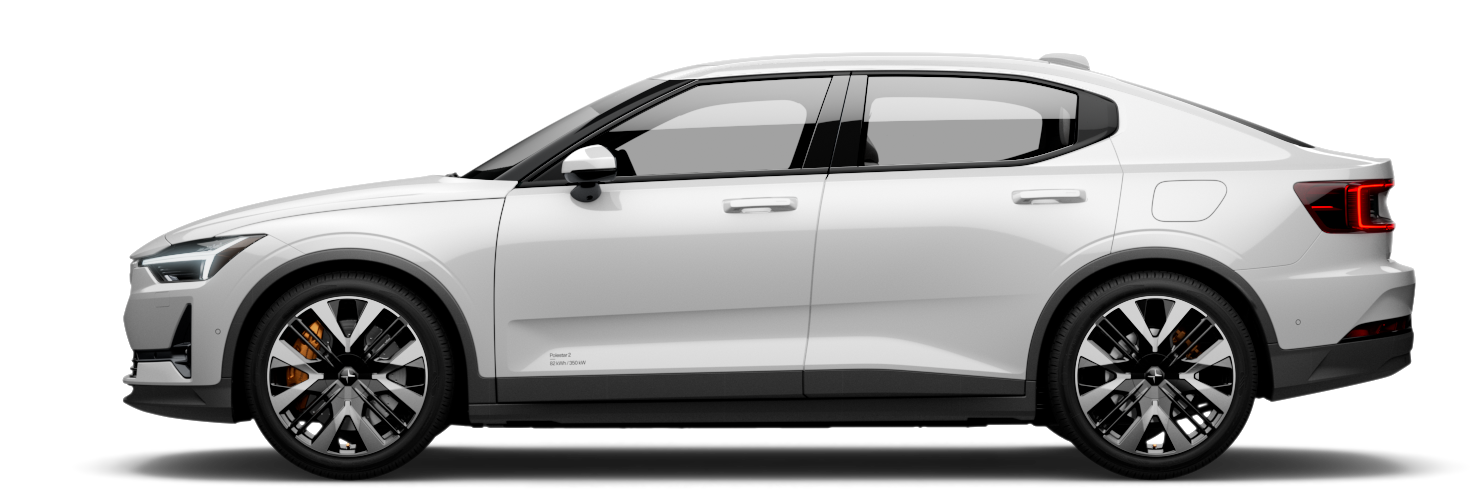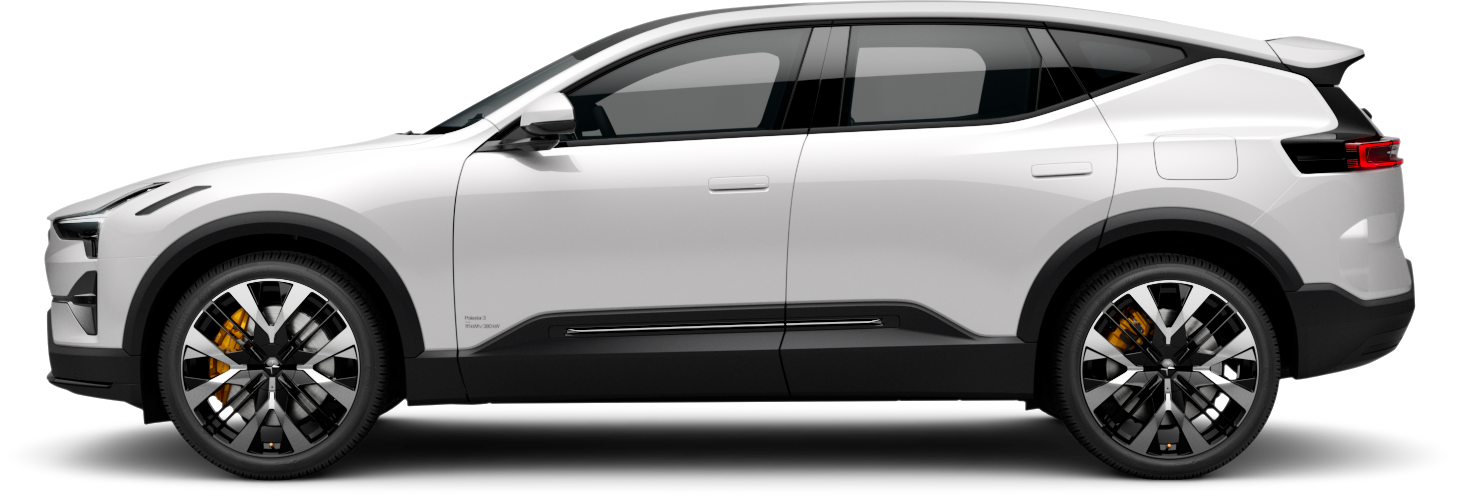Recommended tires
At delivery, the vehicle is equipped with Polestar original tires that have the POL marking on their sides1. These tires are carefully adapted to the vehicle. It is therefore important that if you change tires, the new tires also have this marking, in order to maintain the vehicle's driving characteristics, comfort and electricity consumption.
Original tires
Your vehicle is originally equipped with tires according to the label found on the pillar by the left front door.
The tires have good road-holding properties and provide good driving characteristics on dry and wet road surfaces. Remember, however, that the tires have been developed to provide these properties on roads that are free from ice and snow.
Some vehicles are equipped with a combination of tires and wheel rims with extra-high performance. They are designed to perform capably on dry road surfaces and offer resistance against aquaplaning. These may be more sensitive to damage on the road surface and, depending on conditions, may have a service life of less than 30,000 km (20,000 miles). Even if the vehicle is equipped with AWD or stability systems, these tires are not designed for winter driving and should be changed to winter tires as the weather requires.
All-season tires provide slightly better roadholding on slippery road surfaces than tires without the "all-season" classification. However, for good road holding on icy or snow-covered roads, Polestar recommends winter tires on all four wheels.
Tire age
Polestar recommends that tires should be changed after 6 years of normal use. Tires age and deteriorate over time, even if they are rarely or never used. The function can therefore be affected. This applies to all tires that are stored for future use. Heat caused by hot climates, frequently transporting heavy loads or exposure to ultraviolet (UV) radiation may accelerate the aging process. Cracks or discoloration are examples of external signs indicating that the tire is unsuitable for use. A tire that has visible signs of deterioration should be changed immediately.
When you replace your tires, it is important to use the newest tires possible. This is especially important with regard to winter tires. Use the tires' DOT2 markings to determine how old your tires are.
Replacing tires
When you replace your tires, you must make sure that all tires have the correct size designation, are of the same type (radial), and are preferably from the same manufacturer as the original tires. Otherwise, there is a risk of changing the vehicle's road-holding properties and driving characteristics.
The wheel must always rotate in the same direction throughout its lifespan. It is not possible to switch originally mounted wheels between the front and rear axles.
If the wheels are mounted incorrectly, the vehicle's braking characteristics and capacity to deflect rain and slush are adversely affected.
Wheel rims and tire sizes
Warning
- Your Polestar's wheel rim and tire sizes are specified to meet stringent requirements for stability and driving characteristics. Unapproved combinations of wheel rim size and tire size may have a negative effect on the vehicle s stability and driving characteristics.
- Any damage caused by mounting unapproved combinations of rim size and tire size are not covered by the new vehicle warranty. Polestar accepts no liability for death, personal injury or any costs caused by such installations.
- Do not use steel or aluminum wheel rims that are damaged, cracked or deformed, that have extensive corrosion damage, or that have been welded or repaired.





